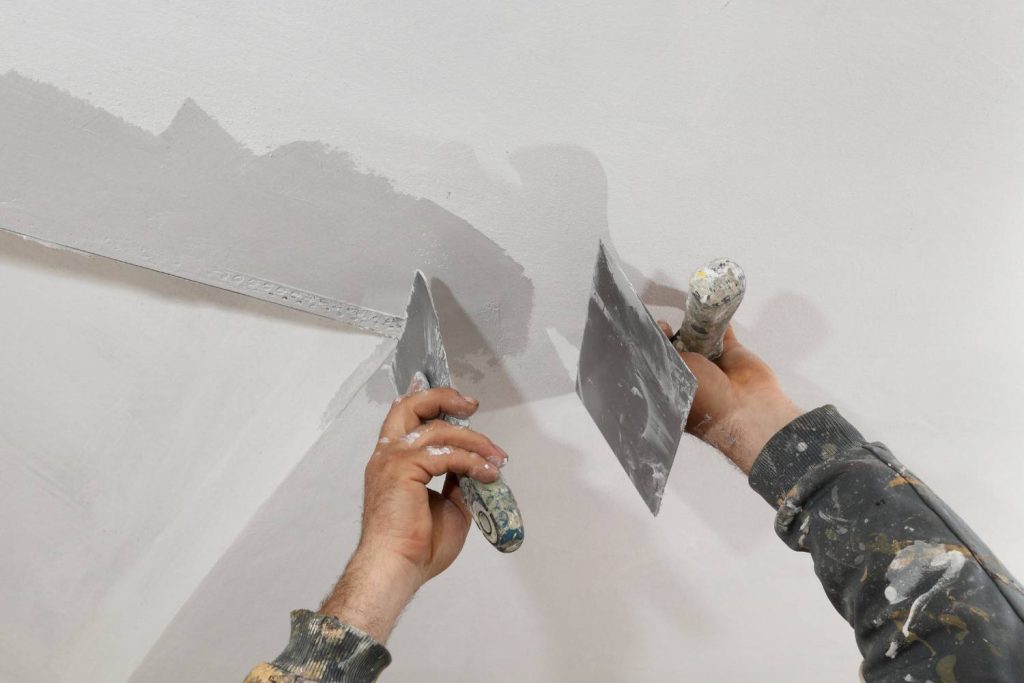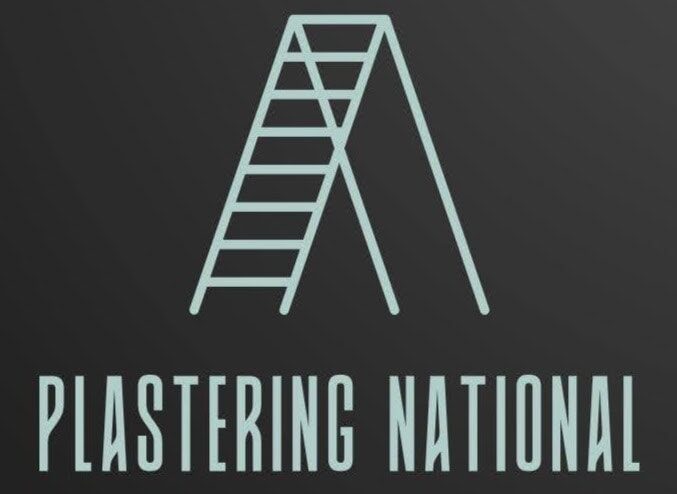Plastering a ceiling can transform the look of any room, giving it a fresh, clean finish. Whether renovating an old ceiling or starting fresh, plastering is a great skill to learn.
This guide will walk you through the process, from preparing the surface to applying the plaster and finishing it off, all with a focus on durability and quality.
Let’s get straight to the point.
Plastering a ceiling requires careful preparation, the right tools, and proper technique to achieve a smooth, durable finish. Start by assessing the ceiling’s condition, cleaning the surface, and making necessary repairs.
Mix the plaster to a smooth, lump-free consistency, first applying a thin scratch coat for adhesion, followed by a floating coat to level the surface. The final coat ensures a flawless finish, polished with a trowel for smoothness.
Allow proper drying before sanding. Using the right materials, mastering the trowel technique, and preventing moisture issues will help create a long-lasting, professional-quality plastered ceiling.
The Basics Of Plaster

Plaster is made from gypsum, lime, or cement and applied over surfaces to create a smooth or textured finish.
It’s commonly used for walls and ceilings and is known for its durability and ability to create an elegant, seamless appearance.
Historically, plaster was chosen for interior finishes due to its versatility and long-lasting results.
Precision is key in ceiling plastering, as the material must bond securely with the surface to avoid cracking or damage over time.
Why Durability Matters?
Durability is important when plastering ceilings because it ensures the surface can withstand environmental factors such as humidity, structural movement, and temperature changes.
A properly plastered ceiling will last for years, reducing the need for frequent repairs. Beyond its aesthetic benefits, plaster also offers soundproofing and fire resistance, making it a smart choice for function and appearance.
Preparation For Ceiling Plastering
Careful preparation is crucial to achieving professional results before starting your plastering project. From assessing the ceiling to gathering the right tools, here’s how to start.
1. Assess The Ceiling’s Condition
Before applying plaster, inspect the ceiling for cracks, holes, or uneven surfaces. Use a flashlight to check for imperfections that may not be easily visible.
This assessment will guide you in making any necessary repairs before plastering begins.
If there are significant issues, you may need to use a filler or patching compound to ensure a smooth surface for the plaster to adhere to.
2. Gather Tools And Materials
You’ll need several key tools to plaster a ceiling, including successfully.
- Plastering trowel
- Hawk Board
- Mixing bucket
- Power mixer
- Step ladder
It’s important to use high-quality, comfortable tools that are easy to handle, making the plastering process easier and more effective.
3. Prepare The Surface
A clean surface is essential for proper plaster adhesion. Start by removing any loose plaster, dust, or debris from the ceiling.
Grease marks or stains should be cleaned with a mild detergent solution. Cracks or holes should be filled with a patching compound and sanded smooth.
Ensuring the surface is clean and smooth will help the plaster bond properly and last longer.
Mixing And Applying Plaster
Properly mixing the plaster is the foundation of a successful plastering job. Follow these steps to ensure a smooth, consistent mixture.
1. Mixing The Plaster
Start by following the manufacturer’s instructions on your plaster product.
Generally, adding water to your mixing bucket first is recommended, then gradually sprinkling the plaster into the water while stirring.
This prevents clumps from forming and ensures an even consistency.
The goal is to achieve a texture similar to thick yoghurt—smooth but not runny. If the mixture is too thick, add more water; if it’s too runny, add more plaster.
2. Apply The First Coat (Scratch Coat)
The first layer of plaster, called the scratch coat, is applied thinly and evenly across the ceiling.
Using your trowel, spread the plaster in sections, starting from one corner of the ceiling and working systematically.
This layer provides the foundation for subsequent coats and helps the plaster bond with the surface.
3. The Second Coat (Floating Coat)
Apply the second coat once the scratch coat has been partially set but before it fully dries. This coat, known as the floating coat, is designed to level out the surface and fill any imperfections.
Use consistent pressure with your trowel to create an even surface, ensuring a smooth finish for the final coat.
4. Smoothing The Surface
After applying the second coat, use your trowel in gentle, sweeping motions to smooth the plaster.
A damp sponge can also help smooth out any rough spots. The goal is to eliminate trowel lines and create a seamless surface.
The Final Coat And Finishing
The final coat of plaster is applied to give the ceiling a polished, professional finish. This step requires attention to detail, as it’s what will ultimately be seen.
1. Applying The Finishing Coat
Apply a thin layer of finely mixed plaster over the entire ceiling, ensuring the surface is smooth and even. Pay extra attention to areas needing more work to achieve a flawless finish.
This coat should be applied carefully, as it determines the final appearance.
2. Polishing The Surface
Once the finishing coat is applied, polish the surface using a clean, slightly wet trowel. Broad, smooth strokes will help compact the plaster and bring out a natural shine.
This step is key to achieving a high-quality, smooth finish that looks professional.
Drying And Sanding
Allow the plaster to dry thoroughly, which may take several days, depending on the environment.
Once fully dry, lightly sand the surface using fine-grit sandpaper to remove minor imperfections or bumps.
This will prepare the ceiling for painting or other finishing touches.
Tips For Successful Ceiling Plastering

To help you achieve the best results, follow these tips for successful ceiling plastering:
1. Proper Preparation
Thorough preparation is essential for plastering success. Ensure the ceiling surface is clean, smooth, and ready for the plaster to adhere properly.
2. Choose The Right Materials
Select the appropriate plaster for your ceiling based on the room’s conditions. Gypsum-based plaster is often ideal for ceilings, but other materials may be more appropriate depending on the environment.
3. Mix Plaster Carefully
Achieving the right consistency is key to a smooth finish. Follow the manufacturer’s instructions and mix carefully to avoid lumps or an uneven texture.
4. Apply Plaster In Stages
Plastering is best done in multiple coats. Start with the scratch coat, followed by the floating coat, and finish with a final, thin layer. Allow each coat to set before moving on to the next.
5. Keep Tools Clean
Clean tools are crucial for achieving a smooth plaster finish. Ensure your trowel and hawk board are free of old plaster or debris, as even small particles can cause imperfections on the final surface.
6. Master Trowel Technique
The angle and pressure you apply with your trowel will affect the finish of your plaster. Practice keeping the trowel at the right angle and applying consistent pressure to achieve a smooth, professional result.
Preventing Moisture Issues
One common challenge with plaster ceilings is moisture, which can cause damage or mould growth. Here are some tips to prevent moisture problems:
- Ensure proper ventilation in rooms with high humidity, such as bathrooms or kitchens.
- Seal any cracks or gaps in the ceiling to prevent water from leaking.
- Use moisture-resistant plaster or apply a sealant for added protection in damp areas.
Keeping your plaster ceiling dry will prevent long-term damage and preserve the quality of your work.
Conclusion
Plastering a ceiling can be a rewarding DIY project when done correctly.
By following the steps outlined in this guide—proper preparation, careful mixing, and applying multiple coats—you can achieve a professional-quality finish that will last for years.
With the right tools, materials, and techniques, transforming your ceiling into a smooth, flawless surface is well within your reach.
For the best results, take your time, work in stages, and ensure that each layer of plaster is applied evenly.
By paying attention to details and ensuring durability, you’ll have a ceiling that’s not only beautiful but also long-lasting.
Frequently Asked Questions
Can I Plaster A Ceiling Myself, Or Should I Hire A Professional?
Yes, you can plaster a ceiling yourself, especially if you’re comfortable with DIY projects and follow the steps and techniques outlined in this blog. Plastering requires patience and practice to achieve a smooth finish, so if you’re new to plastering, you should start with a small, less visible area. However, hiring a professional might be more practical to ensure a high-quality finish for large projects or ceilings with significant damage.
How Long Does It Take For Ceiling Plaster To Dry?
The drying time for plaster can vary based on several factors, including the type of plaster used, the thickness of the application, and the room’s humidity and temperature. Generally, plaster can take 2 to 3 days to dry enough to be sanded or painted. However, it’s best to wait at least a week before applying any heavy finishes to ensure the plaster is fully cured.
What Type Of Plaster Should I Use For My Ceiling?
For ceilings, using a multi-finish or board finish plaster is recommended, as these types are easier to work with and provide a smooth finish. If you’re plastering over Artex or repairing a damaged area, you might need a backing plaster or bonding coat first to ensure proper adhesion. Always check the manufacturer’s recommendations for your specific project needs.
How Do I Prevent My Plastered Ceiling From Cracking?
To prevent cracking:
- Ensure your ceiling surface is properly prepared, cleaned, and primed before applying plaster.
- Avoid applying plaster too thickly in one go; gradually build up layers.
- Control the room’s environment by avoiding extreme temperatures and humidity levels during drying. If cracks do appear, they can often be filled in with a fine surface filler before sanding and finishing.
Can I Plaster Over An Existing Painted Ceiling?
Yes, you can plaster over an existing painted ceiling, but you’ll need to prepare the surface properly to ensure the new plaster adheres well. This preparation may include sanding the painted surface to create texture, cleaning it thoroughly to remove dust and grease, and applying a bonding agent or diluted PVA glue to provide a suitable base for the plaster. If the paint is peeling or flaking, it should be scraped off, and the area should be prepared as if it were a new surface.

